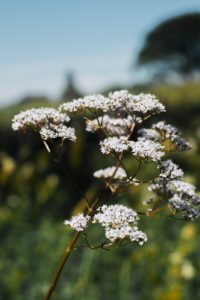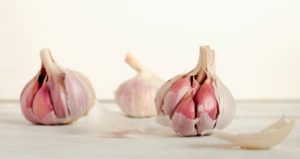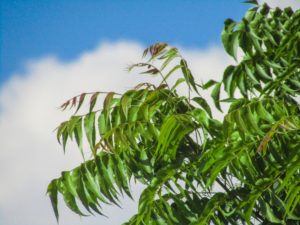This website uses cookies so that we can provide you with the best user experience possible. Cookie information is stored in your browser and performs functions such as recognising you when you return to our website and helping our team to understand which sections of the website you find most interesting and useful.
National Herb Day 2022
Whether it’s the sweet smell of rosemary or the savory scent of oregano, there’s nothing quite like the odor of home-grown botanicals! But while almost everyone loves vetiver, lavender, and lemongrass; there are certain helpful plants that are just a little more skunky than others.
In honor of National Herb Day, we’d like to highlight four of the smelliest therapeutic herbs and plant medicines that you can grow and prepare for use indoors…just with plenty of ventilation.
Valerian
Valeriana officinalis

Rona Dainty
Smelling the sweet flowers of this butterfly-attracting plant might lead you to think any treatments made with valerian would be just as pleasant. Unfortunately, the stress alleviating and sleep-encouraging compounds are most concentrated in the roots of the plant–which are famous for smelling like good cheese, bad feet, and average dog waste all at once.
It’s not a bad price to pay for vivid, lucid dreams and even happy cats—but even when powdered, capsuled, and bottled, the scent can overpower entire rooms! Advice for storage usually involves isolated drawers, and advice for oral administration usually involves holding your breath.
As such, drying this medicinal plant for home use is a process best handled with fans, filters, and breathing through the mouth!
Garlic and Onions
Allium sativum and Allium cepa

Mike Kenneally
Onions are known for causing tears and halitosis, and its cousin garlic is as famous for highlighting foods from around the world as it is for warding off vampires. But did you know the powerful bulbs of both these plants can also be used to eliminate real parasites?
Both plants have reputations for curing acne, warding off mosquitos, and lowering blood pressure, which are sadly, mostly unearned. What we do have significant evidence for is their use in purging intestinal worms in different animals and healthy humans!
While garlic keeps a lower profile as long as the bulbs are underground, onion blooms will scent the air around them–and both plants growing hydroponically will get fragrant fast. Having a steady home supply of alliums means keeping them walled off until harvest time.
Neem
Azadirachta indica

Madhav Malleda
Neem hails from India, and produces leaves with a scent that’s gently described as ‘nutty’, ‘earthy’, and ‘…well it certainly smells medicinal’.
The leaves contain antifungal compounds, as do the bark, roots, and seeds. Applied topically, seed oils or body butters containing the powdered leaves can aid in relief from fungal infections, especially itching!
It’s also plant medicine! Powdered neem leaf is a proven insecticide, and the whole leaves are commonly stored with dry goods and clothing to keep hungry bugs at bay! Added to soil, neem powder deters certain root-eating insects and molds, as well as providing fertilizer.
While neem certainly tops this list as the largest traditional medicine-bearing plant– growing into trees up to 66 feet high – they don’t start that way! Like any other seedling, they need a hospitable environment to grow up in–especially when planted outside their native habitat.
Nurturing saplings indoors until they’re strong enough to withstand the animals and elements outside can be a great way to start growing your own medicine! Just make sure you build in space for them to expand (and maybe don’t wait until they’re too heavy to lift up and out).


